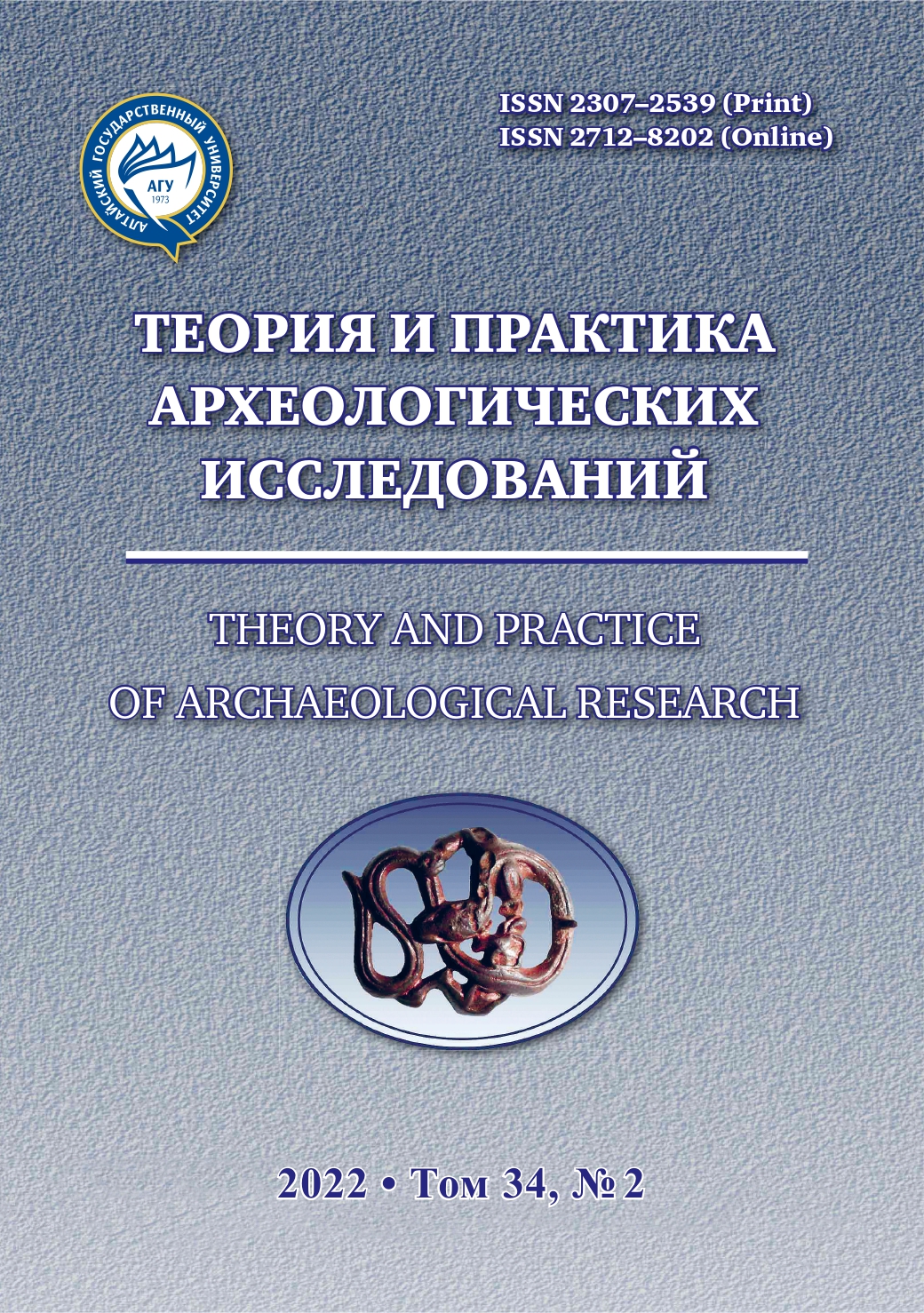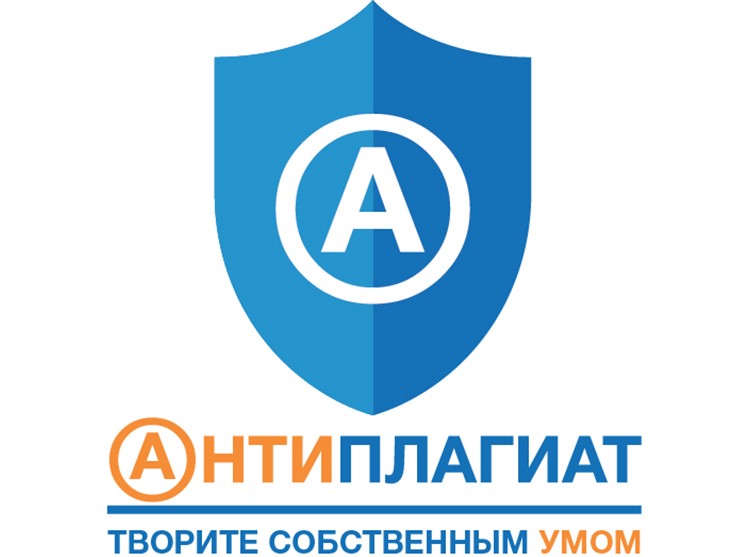THE BURIAL MOUND OF MOGILNO-STAROZHILSKOE-V IN THE FOREST-STEPPE PRIIRTYSHYE AS A SOURCE ON THE ETHNOCULTURAL HISTORY OF THE REGION
Abstract
This article explores some issues of the ethnic history of the indigenous population of the Omsk Irtysh region. This paper analyses the materials of the burial mound of Mogilno-Starozhilskoe-V, studied by the authors in 2018–2019. The site is located in the range of the northern forest-steppe of the Tobolo-Irtysh region. Th e burial ground consists of 80 mounds located on a low-lying remnant in the floodplain of the left bank of the Irtysh. As a result of the excavations, 4 burial mounds and a ritual complex associated with memorial rites were investigated. All burials were violated in ancient times for ritual purposes. The revealed details of the funeral rite and the accompanying inventory allowed us to conclude that the site was left by the nomadic population of the 14th — 15 th centuries. The study of historical and ethnographic materials, as well as a comparative analysis of archaeological data, gives reason to believe there is an ethno-cultural connection of this group with the Baraba Turks.
Downloads
Metrics
No metrics found.
References
Epimakhov A. V., Kupriyanova E. V. All-Russian (with international participation) Round Table “Archaeology of Ancient Robberies and Symbolic Burials” (Chelyabinsk, 2015). Vestnik Yuzhno-ural’skogo gosudarstvennogo universiteta. Seriya: Social’no-gumanitarnye nauki = Bulletin of the South Ural State University. Series: Social Sciences and the Humanities. 2015;15(3):115–117. (In Russ.).
Zhuk A. V. Malakhov as an Archaeologist. In: Tara is 400 years old. Problems of Socio-Economic Development of Siberia. Part 2: Archaeology and Ethnography. Omsk : Om. gos. un-t, 1994. Pp. 14–23. (In Russ.).
Konikov B. A. Omsk Irtysh Region in the Early and Developed Middle Ages. Omsk : Nauka, 2007. 466 p. (In Russ.).
Korusenko M. A. Report on Archaeological Exploration in Omsk, Omsk, Maryanovsky, Shcherbakulsky, Kalachinsky, Kormilovsky, Novovarshavsky, Sargatsky, Muromtsevsky Districts of the Omsk Region in 2018–2019: in 7 volumes. In: Archive of Omsk Laboratory of Archaeology, Ethnography and Museology of IAET SB RAS. F.VII-4, Disc No. 3-2020 Omsk, 2020. Vol. II: text. 273 с. [Online source]. 1 CD-R. (In Russ.).
Korusenko M. A., Gerasimov Yu. V. The Burial Ground of Mogilno-Starozhilskoe V in the Omsk Irtysh Region as a Source for the Ethnocultural History of the Region. In Problems of Archaeology, Ethnography, Anthropology of Siberia and Adjacent Territories. Vol. XXVII. Novosibirsk : Nauka, 2021. Pp. 481–487.
Maslyuzhenko D. N. The “Initial” Stage of Functioning of the Uzbek Khanate of Abul-l-Khair Khan in Russian Historiography. Vestnik Kurganskogo universiteta. Seriya: gumanitarnye nauki = Bulletin of Kurgan University. Series: Humanitarian Sciences. 2011;7(3):52–58. (In Russ.).
Maslyuzhenko D. N. Composition and Functions of the Ruling Elite of the Tyumen and Siberian Khanates. Vestnik Permskogo gosudarstvennogo universiteta. Istoriya = Bulletin of Perm University. History. 2017;2:122–131. (In Russ.).
Mogilnikov V. A. Report on the Work of the Irtysh Detachment of the West Siberian Expedition in 1967. In: Archive of IA RAS. F-1. R-1. No. 3464. 52 р; No. 3464a — Album of Illustrations to the Report. 29 p, 63 il. (In Russ.).
Mogilnikov V. A. Kimaki. Siberian Antiquities of the 6 th –10 th Centuries. In: Archaeology of the USSR. Steppes of Eurasia in the Middle Ages. Moscow : Nauka, 1981а. Pp. 43–45. (In Russ.).
Mogilnikov V. A. The Sites of Nomads of Siberia and Central Asia of the 13 th –14th Centuries. In: Archaeology of the USSR. Steppes of Eurasia in the Middle Ages. Moscow : Nauka, 1981b. Pp. 194–200. (In Russ.).
Molodin V. I., Sobolev V. I., Soloviev A.I. Baraba in the Late Middle Ages. Novosibirsk: Nauka, 1990. 262 p. (In Russ.)
Mustakimov I. A. Possessions of Shiban and Shibanids in the 13th — 15 th Centuries According to Some Arabographic Sources. In: Medieval Turkic-Tatar States. Issue 2. Kazan : Ihlas, 2010. Pp. 21–32. (In Russ.).
Ovchinnikov V. A., Fedyunyaeva N. A., Sulin E. A., Chebakova T. N., Lipsky V. I., Beltikova G. V., Petrin V. T. Report on Archaeological Surveys Carried out by the Ural Expedition in 1966. In: Archive of IA RAS. F-1. R-1. No. 3425. 84 p. (In Russ.).
Tomilov N. A. Ethnic History of the Turkic-Speaking Population of the West Siberian Plain in the 16th — 20th Century. Novosibirsk : Nauka, 1992. 271 p. (In Russ.).
Chagaeva A. S. Report on the Archaeological Work of Omsk State Pedagogical Institute Named after A.M. Gorky, Conducted in the Summer of 1964. In: Archive of IA RAS. F-1. R-1. No. 2921. 33 p., 20 il. (In Russ.).
Chernyshev S. A. The Ancient (pre-Mongol) Period of the Development of Statehood in Western Siberia in the Context of the Socio-Economic History of Central Asia.Vestnik Omskogo gosudarstvennogo universiteta = Bulletin of Omsk State University. 2015;4:156–159 (In Russ.).
Theory and Practice of Archaeological Research is a golden publisher, as we allow self-archiving, but most importantly we are fully transparent about your rights.
Authors may present and discuss their findings ahead of publication: at biological or scientific conferences, on preprint servers, in public databases, and in blogs, wikis, tweets, and other informal communication channels.
Theory and Practice of Archaeological Research allows authors to deposit manuscripts (currently under review or those for intended submission to ABS) in non-commercial, pre-print servers such as ArXiv.
Authors who publish with this journal agree to the following terms:
- Authors retain copyright and grant the journal right of first publication with the work simultaneously licensed under a Creative Commons Attribution License (CC BY 4.0) that allows others to share the work with an acknowledgement of the work's authorship and initial publication in this journal.
- Authors are able to enter into separate, additional contractual arrangements for the non-exclusive distribution of the journal's published version of the work (e.g., post it to an institutional repository or publish it in a book), with an acknowledgement of its initial publication in this journal.
- Authors are permitted and encouraged to post their work online (e.g., in institutional repositories or on their website) prior to and during the submission process, as it can lead to productive exchanges, as well as earlier and greater citation of published work (See The Effect of Open Access).








2.jpg)




